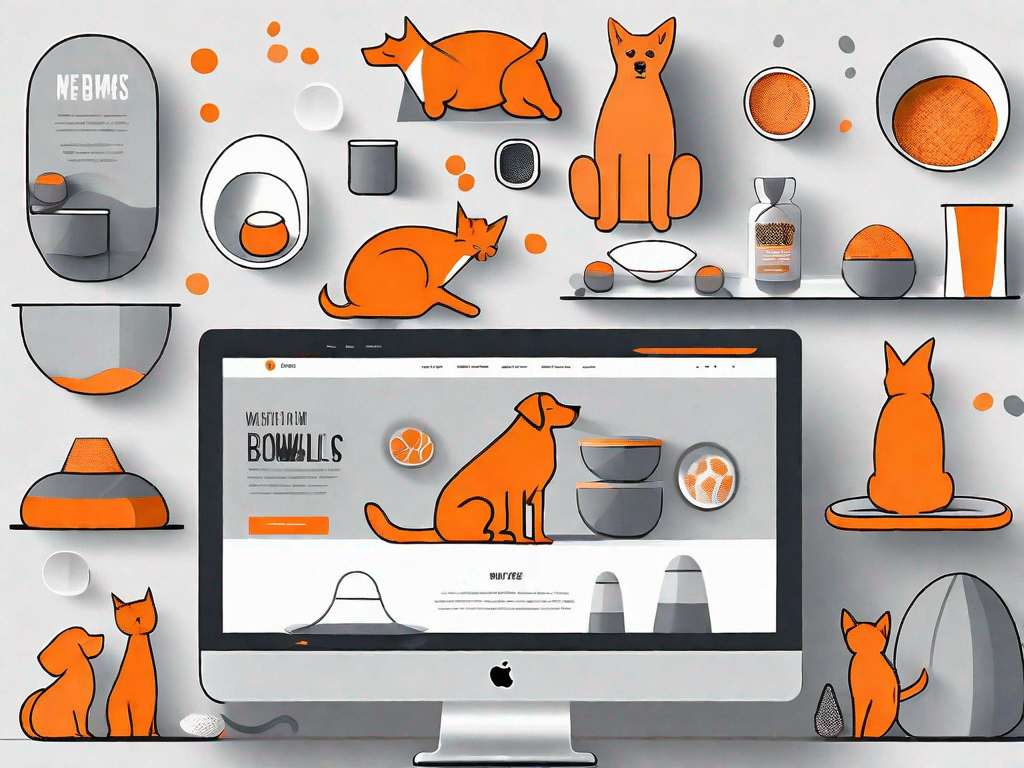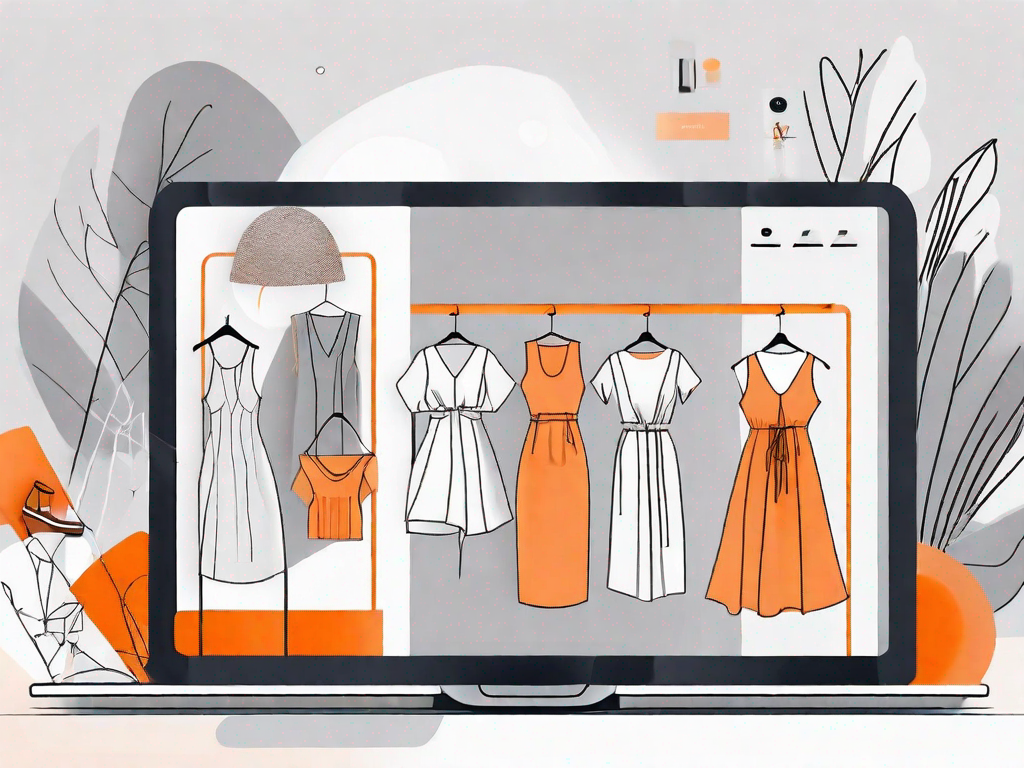.svg)
Email Automation and Sequences: Streamlining Your Email Marketing
.svg)

Email Automation and Sequences: Streamlining Your Email Marketing
Email automation has become an essential tool for businesses looking to streamline their email marketing efforts. By automating various tasks and sequences, marketers can save time, increase efficiency, and deliver a more personalized experience to their subscribers. In this article, we will explore the importance of email automation in marketing, the benefits of using email automation in your strategy, and how to choose the right email automation software.
The Importance of Email Automation in Marketing
Email automation allows marketers to set up predefined workflows that trigger specific actions based on subscriber behavior or other predetermined conditions. This eliminates the need for manual intervention, saving valuable time and resources. Instead of sending individual emails to each subscriber, automation allows businesses to send targeted messages to specific segments of their audience, delivering the right content at the right time.
But let's delve deeper into the world of email automation and explore its incredible benefits.
How email automation can save time and increase efficiency
One of the biggest advantages of email automation is its ability to save time. With automation, marketers can create a series of emails in advance and set them to be sent automatically. This eliminates the need to manually send emails one by one or to remember specific dates or times to send them. By automating repetitive tasks, marketers can focus on other aspects of their strategy, such as content creation, data analysis, and campaign optimization.
Imagine having to manually send hundreds or even thousands of emails individually. It would be a time-consuming and tedious process, prone to human error. However, with email automation, marketers can breathe a sigh of relief as the system takes care of sending emails on their behalf. This not only saves time but also ensures that each subscriber receives the intended message promptly and accurately.
Furthermore, email automation allows marketers to schedule emails in advance, ensuring that they are sent at the most opportune moments. Whether it's a welcome email to greet new subscribers or a promotional email to coincide with a special event, automation ensures that the right message reaches the right recipient at the right time. This level of precision and timeliness can significantly impact the effectiveness of marketing campaigns.
Another benefit of email automation is its ability to increase efficiency. Automated workflows can be triggered by specific actions or events, such as a subscriber joining a mailing list, making a purchase, or clicking on a particular link. By leveraging these triggers, marketers can send more targeted and relevant messages to their subscribers, increasing engagement and conversion rates.
For instance, imagine a scenario where a subscriber signs up for a newsletter. With email automation, the subscriber can automatically receive a welcome email, introducing them to the brand and its offerings. This initial interaction sets the tone for a personalized and engaging relationship, making the subscriber feel valued and appreciated.
Moreover, email automation enables marketers to segment their audience based on various criteria, such as demographics, purchase history, or engagement level. By tailoring messages to specific segments, marketers can deliver content that resonates with each group's unique interests and preferences. This level of personalization not only enhances the subscriber experience but also increases the likelihood of conversion and customer loyalty.
Furthermore, email automation allows marketers to track and analyze the performance of their campaigns more effectively. By monitoring open rates, click-through rates, and conversion rates, marketers can gain valuable insights into what resonates with their audience and what needs improvement. Armed with this data, they can make data-driven decisions to optimize future campaigns and achieve better results.
In conclusion, email automation is a powerful tool that can revolutionize marketing strategies. By saving time, increasing efficiency, and delivering personalized content, automation allows marketers to engage with their audience in a more targeted and meaningful way. So, if you haven't already embraced email automation, it's time to unlock its potential and take your marketing efforts to new heights.
Understanding Email Sequences
Email sequences are a series of pre-determined emails that are sent to subscribers at specific intervals. These sequences are designed to guide subscribers through a journey, such as onboarding new customers, nurturing leads, or following up after a purchase.
When it comes to email marketing, it's not just about sending a single email and hoping for the best. Email sequences provide a strategic approach to engage with your audience over time, delivering relevant and valuable content that keeps them connected to your brand. Let's dive deeper into the world of email sequences and explore how they work.
What are email sequences and how do they work?
Email sequences work by sending a series of emails based on predetermined triggers or time intervals. It's like having a conversation with your subscribers, but instead of doing it all at once, you break it down into smaller, more manageable chunks.
Let's say you have a new customer who just signed up for your service. Instead of bombarding them with a lengthy email containing all the information about your product, you can create an onboarding sequence. This sequence can start with a friendly welcome email, followed by a series of educational emails that guide them through the key features and benefits of your offering.
By breaking down the information into multiple emails, businesses can provide a more comprehensive and digestible onboarding experience. This approach allows subscribers to absorb the information at their own pace and increases the chances of them fully understanding and appreciating what your brand has to offer.
Different types of email sequences and when to use them
There are several types of email sequences that businesses can use to achieve different goals. Let's take a closer look at some of the most common types:
- Welcome sequence: Sent to new subscribers to introduce them to your brand and set expectations.
When someone subscribes to your email list, it's important to make a good first impression. A welcome sequence allows you to greet new subscribers and make them feel valued. You can use this opportunity to share more about your brand's story, highlight your unique selling points, and set expectations for what they can expect from being a part of your community.
- Nurture sequence: Designed to build a relationship with leads and educate them about your products or services.
Building a strong relationship with your leads is crucial for converting them into loyal customers. A nurture sequence helps you establish trust and credibility by providing valuable content that educates and guides your audience. You can share case studies, testimonials, and success stories to showcase the benefits of your products or services. By consistently delivering value, you'll keep your brand top of mind and increase the likelihood of conversion.
- Abandoned cart sequence: Sent to remind customers about items they've left in their shopping cart and encourage them to complete the purchase.
Have you ever added items to your online shopping cart and then got distracted or changed your mind? It happens to the best of us. An abandoned cart sequence aims to recover these lost sales by sending timely reminders to customers who have left items behind. You can offer incentives, such as discounts or free shipping, to entice them to come back and complete their purchase. This gentle nudge can make a significant difference in your conversion rates.
- Re-engagement sequence: Sent to inactive subscribers to rekindle their interest and encourage them to engage with your brand again.
Over time, some subscribers may lose interest or become inactive. A re-engagement sequence allows you to reconnect with these subscribers and reignite their interest in your brand. You can offer exclusive content, special promotions, or personalized recommendations to grab their attention and remind them of the value you provide. By showing them that you still care about their needs, you have a chance to win them back and turn them into active and engaged subscribers once again.
Each type of email sequence serves a specific purpose and can be tailored to meet the unique needs of your business. By leveraging the power of email sequences, you can automate your communication efforts and deliver a personalized experience that keeps your subscribers engaged and eager to hear from you.
Choosing the Right Email Automation Software
When selecting an email automation tool, there are several key features to consider:
Key features to consider when selecting an email automation tool
1. Ease of use: Look for software that is user-friendly and intuitive, allowing you to set up and manage automation workflows easily.
2. Integration capabilities: Ensure that the software integrates seamlessly with your existing platforms, such as your CRM or e-commerce system.
3. Personalization options: Look for software that allows you to personalize your emails based on subscriber data, such as their name, location, or purchase history.
4. Analytics and reporting: Choose a tool that provides detailed analytics and reporting features to track the performance of your email campaigns and automation workflows.
Comparison of popular email automation software options
There are several popular email automation software options available in the market, each with its own set of features and pricing plans. Some well-known providers include:
- Mailchimp: Known for its user-friendly interface and comprehensive features, Mailchimp is a popular choice for businesses of all sizes.
- ActiveCampaign: Offering advanced automation and CRM capabilities, ActiveCampaign is a robust option for businesses looking for more extensive customization.
- ConvertKit: Designed specifically for bloggers and content creators, ConvertKit offers easy-to-use automation features and a simplified user experience.
- HubSpot: Known for its all-in-one marketing platform, HubSpot provides robust automation capabilities along with CRM, sales, and customer service functionalities.
Setting Up Your Email Automation
Once you have selected the right email automation software, it's time to set up your automation workflows. Here are some key steps to consider:
Creating a strategic email marketing plan
Before you start setting up your automation workflows, it's important to have a clear plan in place. Define your goals, target audience, and the specific actions you want subscribers to take. By having a strategic email marketing plan, you can ensure that your automation workflows align with your overall marketing strategy and objectives.
Segmenting your audience for targeted automation
Segmentation plays a crucial role in effective email automation. By dividing your audience into smaller segments based on demographics, behavior, or engagement level, you can send more targeted and relevant messages. This increases the chances of engagement and conversions. Use your email automation software to create dynamic segments and assign them to specific automation workflows.
Designing Effective Email Templates
When designing the email templates for your automation workflows, consider the following best practices:
Best practices for designing visually appealing and engaging email templates
1. Keep it simple and clean: Use a clean layout and avoid cluttered designs to ensure that your message is clear and easy to read.
2. Use compelling subject lines: Capture your subscribers' attention with catchy subject lines that entice them to open your emails.
3. Incorporate visual elements: Use images, graphics, and videos to make your emails visually appealing and engaging.
4. Maintain brand consistency: Align your email templates with your brand's visual identity to ensure consistency across all touchpoints.
Optimizing your email templates for different devices and email clients
With the increasing use of mobile devices, it's crucial to optimize your email templates for different screen sizes and email clients. Use responsive design techniques to ensure that your emails look great across devices, and test them on different email clients to ensure compatibility.
Conclusion
Email automation and sequences have revolutionized the way businesses conduct their email marketing campaigns. By utilizing automation tools and strategically setting up sequences, marketers can save time, increase efficiency, and deliver more personalized experiences to their subscribers. Consider your marketing goals, choose the right email automation software, set up targeted sequences, and design visually appealing templates to streamline your email marketing efforts and achieve better results.
Related Posts
Let's
Let’s discuss how we can bring reinvigorated value and purpose to your brand.







.svg)